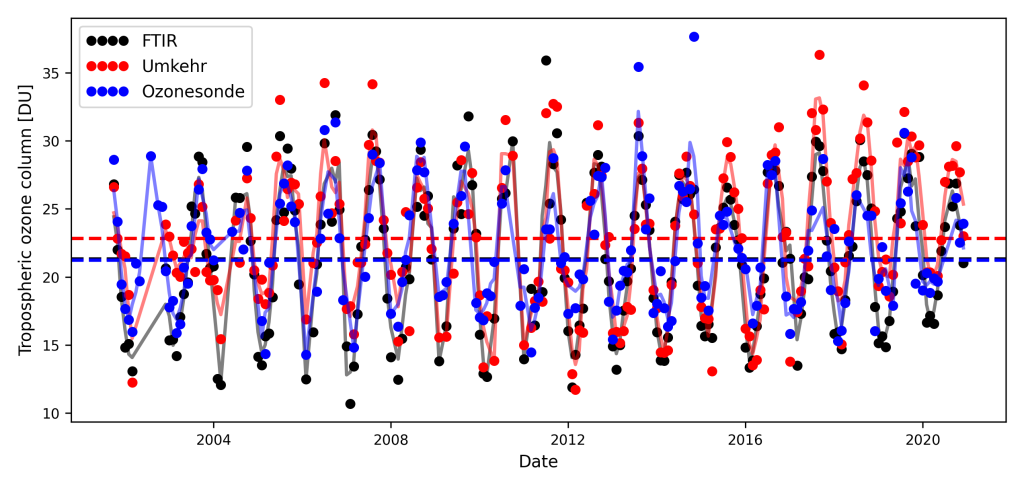![]()
The second phase of the Tropospheric Ozone Assessment Report (TOAR-II) is organized in focus working groups that should produce the papers for the TOAR-II Community Special Issue (the first step of the second Tropospheric Ozone Assessment Report). One such focus working group, HEGIFTOM (Harmonization and Evaluation of Ground-based Instruments for Free-Tropospheric Ozone Measurements), aims at providing quality assessed ozone profile data sets, including uncertainty estimates and quality flags. HEGIFTOM thereby heavily relies on NDACC instruments and representatives, involving FTIR, Lidar, Brewer/Dobson Umkehr and ozonesondes, next to the in-service aircraft ozone profile measurements from IAGOS. Those different “homogenized” datasets are described at the HEGIFTOM website, with the same template for each dataset. The NDACC UV/VIS spectrometer working group also contributes to HEGIFTOM by developing tropospheric ozone profile retrieval from MAX-DOAS and Pandora.
Through intercomparison studies, instrumental drifts between co-located instruments are characterized and evaluated, and the ozone profile retrieval from MAX-DOAS and Pandora will be tested against the well-established techniques. Another ongoing activity, using chemical reanalysis models, is the analysis of the spatial and temporal representativeness information of the various HEGIFTOM instruments, which is done in close collaboration with the TOAR-II Chemical Reanalysis focus working group.
Finally, the HEGIFTOM focus working group will submit in the coming year a “trends” paper to the TOAR-II Community Special Issue. In this paper, the tropospheric ozone trends of all the individual (homogenized) HEGIFTOM/NDACC sites and IAGOS airports, will be presented, following the TOAR-II guidelines on metrics, units, time range, and statistical trend model. This paper will directly contribute to the TOAR-II Climate Assessment Report. The calculated ground-based ozone trends will also be used to validate the trends from harmonized satellite-based tropospheric ozone measurements (an outcome of the TOAR-II Satellite Ozone focus working group).
The close interaction between HEGIFTOM and NDACC is crucial for the success of HEGIFTOM. On the other hand, HEGIFTOM has speed up (homogenization) activities within NDACC instrumental networks, and the harmonized datasets will ultimately be archived in the NDACC database.

Fig. 1: Monthly mean time series of tropospheric ozone columns retrieved by 3 different techniques at Lauder, New Zealand. The rolling means are represented by thin full lines, while the thick dashed lines denote the long-term mean value of the different techniques. Courtesy of Robin Bjorklund (BIRA).